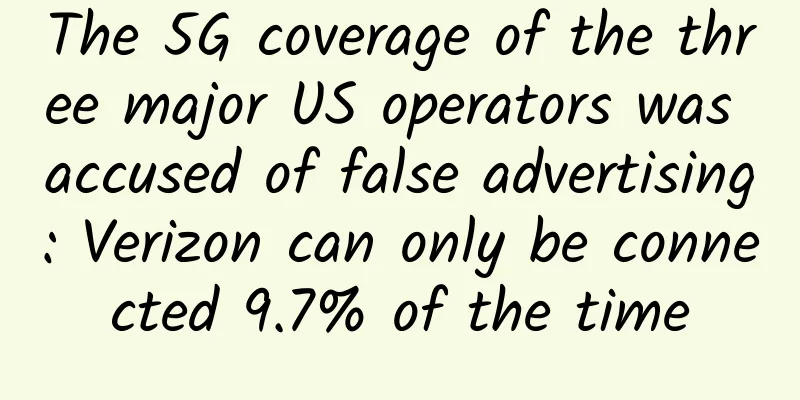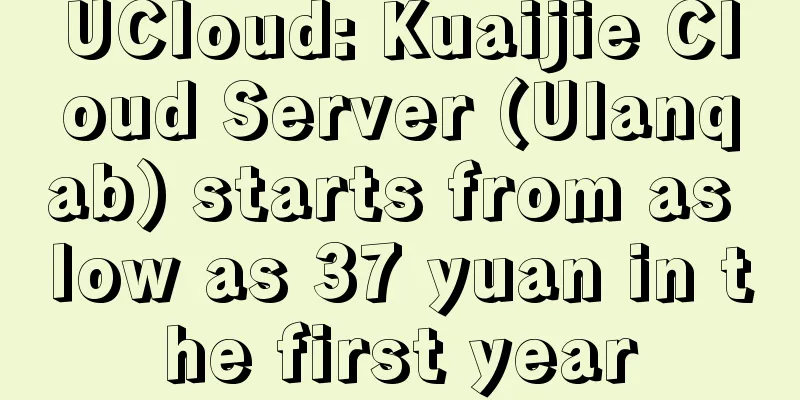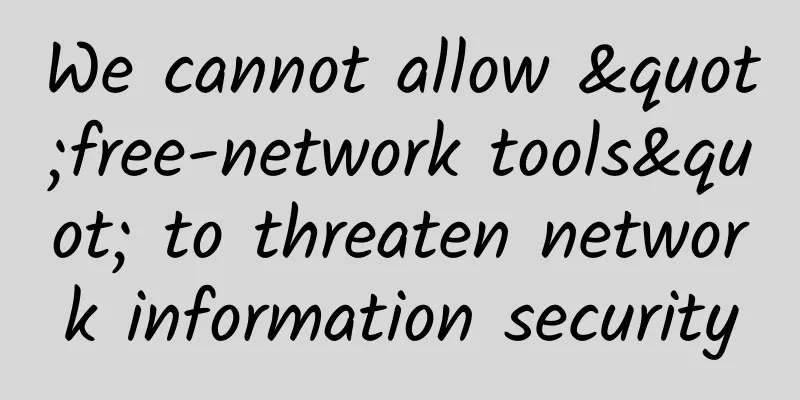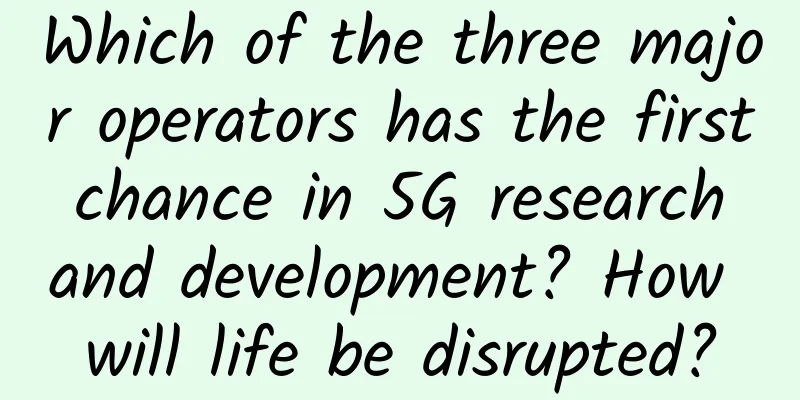Finally someone explained traffic operation clearly

|
This article is reprinted from the WeChat public account "Shucang Baobaoku", written by Song Tianlong. Please contact Shucang Baobaoku public account to reprint this article. Traffic is the core business unit of e-commerce companies. The quality, scale and nature of the company's front-end traffic directly affect the back-end business model and operation strategy. At the same time, since traffic procurement is one of the main cost modules, all companies pay close attention to the traffic operation link. This article will mainly introduce the core concepts and basic steps of traffic operation. Three core concepts of traffic operationTraffic, the source of traffic and the data-based operation of traffic are the three core concepts of traffic operation. 1. What is traffic?Traffic in this article refers to the amount of data exchanged when people access network services through different digital devices (such as mobile phones, computers, smart products, etc.) within a certain period of time. In general, the subject of traffic is people, but in some scenarios, programs (such as crawlers, cheating programs, etc.) can also generate traffic. When people access a network service, there are many metrics that can be used to measure traffic, such as the number of visits, page views, etc. These are called traffic metrics. With the help of different traffic metrics, we can evaluate or analyze the effectiveness of advertising channels, user behavior patterns, conversion of different products or services within the website, website user experience or functionality, etc. 2. Sources of trafficGenerally speaking, traffic can be divided into free traffic and paid traffic according to whether it is paid or not. Free traffic is traffic that can be generated without any advertising fees. For example, users directly enter the company's website in the browser, and users search for specific keywords in the search engine and then find the company's website through natural rankings. These all fall into the category of free traffic. Paid traffic is traffic obtained through resource management, advertising fees, resource exchange and other methods. This type of traffic is also called purchased traffic. For example, traffic that reaches the website after advertising on the homepage of Sina.com, WeChat Moments and Toutiao.com belongs to this type of traffic. When a company's free traffic is managed to a certain extent, the room for optimization becomes very limited. There are two main reasons why traffic purchase becomes the main source of traffic for companies. Controllability. Traffic purchase is mainly subject to budget, that is, as long as there is sufficient budget guarantee, traffic can be purchased on demand. Therefore, it is highly controllable and can ensure to the greatest extent that traffic targets are successfully achieved at the time when traffic is needed. Scalability. In super-large promotional activities, companies often need massive traffic support. Traffic purchasing can bring huge traffic through a variety of channels, strategies and delivery combinations. This large-scale traffic support is the premise and foundation for e-commerce companies to operate large-scale promotional activities (such as Double 11, 618 activities, etc.). In addition to placing advertisements on online digital media to bring in traffic in the traditional sense, many companies have more ways to obtain traffic. For example, offline channels, business cooperation, online and offline integration, traffic support within giant application ecosystems, etc. The original intention of these operations or actions is often not to purchase traffic, but to have other marketing goals, such as the establishment of an internal O2O ecosystem, the trial of cross-border cooperation, the construction of sales channels, the improvement of consumer touchpoints, brand exposure and investor confidence maintenance, new product promotion and offline, etc. But objectively, these "unintentional" actions will be beneficial to the growth of traffic in the company's online digital media to a certain extent. 3. Data-based operation of trafficIn a broad sense, any business activity that can bring traffic is called traffic operation, but the core scope of traffic operation is limited to the operation of online digital media that mainly relies on paid traffic. This is a relatively narrow scope, and the specific elements are as follows. Paid traffic. This means that the business needs to invest an advertising budget to generate traffic. Digital carriers: This refers to the company’s own or directly controllable carriers such as its website, app, mobile site, applet, minisite, and quick application. Operational objectives. The core of the operation is traffic acquisition, and the traffic needs to be landed on the enterprise's digital carrier. Why do we need to focus on paid traffic? In addition to the controllability and scalability characteristics mentioned above, paid traffic has two core characteristics that make it a key focus area for enterprises. Huge cost expenditure. In e-commerce companies, the main items of daily operating cost expenditure often include inventory, logistics and advertising expenses. With traffic becoming more and more expensive, the huge advertising costs have made paid traffic one of the core businesses that all companies must pay attention to. (Companies must know how and where the money is spent.) Greater room for optimization. In addition to the three major expenditure items mentioned above, enterprises may also have other huge cost expenditure items, such as IT hardware costs, technical personnel salaries, etc. In comparison, paid traffic has greater room for optimization and compression, and can achieve the core goals of improving efficiency and reducing costs while ensuring the normal operation of the enterprise. 4 basic steps of traffic operationThe following will introduce the basic steps of traffic operation, including marketing goal determination, channel strategy and plan management, media delivery and execution management, and channel delivery effect evaluation and review, as shown in Figure 1. Figure 1 Basic steps of traffic operation 1. Determine marketing goalsDetermining marketing goals is the first step in traffic operations and the starting point for data-assisted decision-making and data-driven operations. At the beginning of traffic operations, it is necessary to sort out and decompose the overall marketing goals of the company and the marketing goals of each stage and activity. In the marketing goal setting stage, there may be one or more goals at the same time; when designing multiple goals, it is even more necessary to comprehensively consider the combined implementation of different channels for achieving the goals. In the scope of traffic operation, common marketing goals include the following.
Tips The only accurate profit data for an enterprise needs to be obtained from the financial perspective, but the statistics of the financial perspective are complex and lagging, so in most cases, the business perspective is used as a reference for daily center or department-level operations, while the financial perspective is used as a reference for quarterly and annual enterprise-level operations. In terms of the business perspective, profits mainly come from the difference between the purchase and sale prices of goods or services, but many e-commerce companies also obtain other operating profits, such as subsidies from manufacturers or brand owners, gradient rebates based on the scale of commodity sales, secondary sales of internal traffic, disguised cost offsets from the exchange of business cooperation resources, cost sharing of manufacturers participating in promotional activities, and various activity cost allocations. Therefore, although the goods or services appear to be "sold at a loss" on the surface, they may be profitable when the operating profit is finally calculated. Clearing inventory. Sales-oriented companies conduct inventory clearance activities for out-of-season, soon-to-expire, old or even over-age inventory products. This is an activity that many companies (especially those in the clothing, footwear and food categories) will conduct regularly. Tips There are usually big discounts when clearing inventory, but discounts are not the only means. For example, inventory products can participate in platform group buying, rush buying, limited-time purchases during promotional activities, internal welfare sales, external resource exchange and other activities. These activities often do not require big discounts or only provide specific discounts to maximize the balance between sales and profits.
2. Channel strategy and planning managementBased on different marketing goals, companies usually need to formulate channel strategies and advertising plans. The main tasks are as follows: strategy formulation, goal setting, budget application, schedule planning, and media procurement. See Figure 2. Figure 2 Channel strategy and planning management content There is no strict order for these five items. Generally speaking, strategy formulation, goal setting, budget application, schedule planning, and then media procurement are carried out. For example, some companies must have a budget first, and then formulate strategies, goals and schedules; some companies first determine strategies and goals, and then reversely deduce the required budget, and then do schedule planning and media procurement after the budget is approved. 1) Strategy formulation Arrange a reasonable media mix according to different marketing activities, including the combination of multiple online media, such as the combination strategies of hard advertising, SEM, and EDM, and the internal combination of various channel types, such as the channel strategies of Toutiao, Sina, and Baidu in the information flow. Some large-scale activities of some companies may also involve the integration and interaction of online and offline (such as online shopping malls and offline physical stores), and the combination of traffic in different online ecosystems (such as self-operated site promotion channels, Taobao ecosystem promotion channels, and WeChat ecosystem promotion channels). The strategy at this time will be more complicated. 2) Goal setting Formulate overall goals based on channel strategies, and design reasonable sub-goals for different channels to assist in achieving the overall goals. In traffic channels, different channels have different value attributes. For example, advertising channels have an absolute advantage in maintaining traffic quantity, SEM is better at balancing traffic quantity and quality, CPS is more effective in traffic conversion, and EDM has a higher tendency to maintain and manage users. How to analyze the value of different types of channels and assign them the "reasonable weights" they should bear in the overall goals and sub-goals is the top priority of this stage. 3) Budget application After the goals at all levels are set, it is necessary to write corresponding marketing materials or reporting materials and apply for a budget from the company's senior management. The marketing budget of most companies has been determined when the company's annual tasks and goals are set, which belongs to the basic category of the company's overall cost and expenditure control. The general budget range of each marketing activity may also be basically determined, so planners need to put the activity plan and corresponding budget application in place in advance. At the same time, it is necessary to "dance in shackles" within the existing budget range and maximize the goals through reasonable budget combination and allocation. 4) Schedule planning After obtaining the corresponding budget, different media delivery schedules need to be arranged according to the overall channel strategy. The schedule of advertising represented by strong media needs to be communicated with the media or advertising platform in advance. For example, portal advertising, navigation advertising and other strong media with CPT as the main sales method need to be "pre-purchased" several months or even quarters in advance, while channels directly controlled by the enterprise (such as SEM, information flow and other media with CPC, CPM, CPA as the delivery model) can be arranged flexibly. 5) Media Procurement After communicating with the media, the entire delivery plan has been roughly clarified. After that, it is necessary to sign contracts with the media, advertising agencies, 4A companies, etc. according to the delivery needs to realize media procurement. At this time, it should be noted that the contract approval process in many large enterprises is relatively long and needs to be approved by multiple departments such as business, legal affairs, finance and even supervision. The long-term absence of key personnel involved (such as annual leave, sick leave, etc.) may delay the entire approval process, thereby affecting the normal cooperation and delivery of the channel. 3. Media placement and execution managementThe media delivery and execution management stage involves matters related to how to implement strategies and goals, mainly including the following aspects: landing page management, advertising delivery management, virtual traffic screening and stop loss, channel testing, and replenishment, as shown in Figure 3. Figure 3: Media placement and execution management content The above five links are the core content of media delivery and execution management. Depending on the marketing channel, other content may also be included. For example, channels with CPD or CPC as the purchasing model may require a lot of media negotiation, communication and coordination, and channels with programmatic advertising and real-time bidding delivery models may involve a lot of programs, content and third-party platform development, collaboration and joint debugging. This type of content mainly revolves around the business entity, while the content of this section is mainly related to data management, so it will not be involved in too much. 1) Landing page management The landing page is the first page after traffic enters the station. The quality of the landing page directly affects the subsequent conversion effect of traffic. Landing page management includes landing page strategy formulation, landing page design, landing page AB testing and optimization, new landing page materials, and overall replacement of the landing page itself. 2) Advertising management Normal advertising delivery management will formulate different management contents according to the characteristics of different channels. Some strong media or channels (such as traditional offline advertising, portals, navigation, pop-up windows, clients, business cooperation, etc.) have almost no "management" space except for changing the off-site delivery materials, while the channels that the enterprise can control itself (SEM, information flow, redirection, EDM, social, etc.) can be flexibly arranged in terms of crowd targeting, region, budget allocation, blacklist, online and offline time, etc. These tasks constitute the core content of the entire delivery management. 3) Identification and stop loss of fake traffic Some CPC and CPM advertising channels mainly use "traffic exposure" or "traffic clicks" as the main billing method. Traffic fraud is more concentrated in this type of channel, so it is very necessary to identify false traffic and ensure traffic quality. Especially when the advertising budget of the channel is high, this issue should be paid more attention. If abnormal traffic can be discovered in time when it occurs, it can be communicated with the media or advertising can be suspended in time, and the interests of the company can be maximized by obtaining compensation from the media, increasing the channel delivery time, expanding the media coverage, or other compensation methods in accordance with the contract. 4) Channel testing Many new channels have a certain testing process. For enterprises, the basic process is to first test and evaluate and optimize with a small budget, then gradually expand the scale of delivery, and then expand to the full scale after further evaluation and optimization. If the test results are not ideal, then more stages of evaluation, testing and optimization may be required. Of course, if the results do not meet expectations, the enterprise will directly abandon the channel. 5) Replenishment Volume replenishment is a unique operation for cooperative channels with guaranteed traffic contracts. When the actual traffic generated does not reach the target agreed upon by the enterprise and the partner, the partner needs to increase the import of traffic through other means, such as increasing the delivery time, expanding the partner's internal traffic export, etc. This is a necessary way to protect the rights and interests of the enterprise. Tips Not all companies and partners can agree on a "quantity guarantee" cooperation model, which involves a game between the company and the partner. The respective market positions of the company and the partner, the investment situation of competitors, the different stages of cooperation between the two parties, the mutual trust between the two parties, the depth of cooperation channels, the determination of the quantity guarantee target, the choice of data detection tools and many other aspects will affect the establishment of the cooperation model. 4. Evaluation and review of channel delivery effectsAfter the marketing activities are completed, it is necessary to evaluate the effects of the channel delivery activities and conduct an operational review. The goal of this link is to summarize and analyze the pros and cons of the entire operation activities and provide empirical references for the next operation; at the same time, based on the difference between the actual data results and the KPI, the marketing department is evaluated for performance and the payment of floating salary (such as quarterly bonuses) is determined. Tips The evaluation and review of channel delivery effectiveness is not a simple statistical analysis of channel effectiveness data, but requires the participation of multiple parties (business, data, and IT) in discussions, repeated discussions and research on the data, and identification of key factors that affect the effectiveness, so as to apply them to subsequent business operations. 1) Data level The effectiveness evaluation does not have to wait until the entire marketing campaign is completely completed before it can begin. Some simple questions and analyses are usually conducted when the data performance is abnormal, such as a sudden drop in traffic (which happens in real time and requires real-time analysis) or a drop in the ROI (return on investment) of the day (which happens on the same day and requires analysis on the same day). Overall analysis or special research requires the accumulation of more data before formal data analysis activities can be carried out. The analysis work at the data level mainly includes the troubleshooting and resolution of common channel execution problems, routine statistics and analysis of channel effects, thematic research and management of channel effects, daily data monitoring, competition analysis and industry analysis. 2) Business level Business activities and data results are two necessary conditions for obtaining correct understanding of laws and regulations. The data feedback only provides the results, that is, it shows what happened, but how the problem occurred is directly subject to actual business operations, as shown below. Channel A started replacing new materials at 10 p.m., which directly led to a decrease in the CTR (click-through rate) of off-site advertising, thus affecting all subsequent visits and conversions of the channel. Modification of the crowd delivery labels directly leads to changes in the crowd behavior of inbound traffic. The landing page link of the advertisement was changed from version A to version B, the bounce rate soared, and the conversion efficiency of all channels was affected. The review of the overall marketing activities needs to combine data and business. It is recommended to take business activities as the main line and data results as the basis to quantify the results of each business operation. This can better ensure that data and business are on the same working channel and the subsequent implementation is stronger. Tips What does it mean that data and business are in the same working channel? In enterprises, it is often the case that although data workers and business personnel discuss issues "face to face", their working ideas, stages of understanding, and even discussion topics are not in the same channel. For example, when data workers are talking about users, content, channels, and conversions, it is difficult for business personnel to correspond to specific operational activities, such as which department or link they belong to, and what influences them. Therefore, there will be problems such as "everyone talking about their own things" and "no one can understand each other". Since data exists based on business, in order to maximize the comprehensibility and feasibility of data, it is necessary to explain, view, sort out, and summarize problems from the perspective of the business, so that the two can better collaborate within the same cognitive range. - END - This book is excerpted from "E-commerce Traffic Data Operation" and is authorized by the publisher. |
>>: With HTTP protocol, why do we need Websocket?
Recommend
5G development is not going smoothly, the number of fake 5G users has become the mainstream, and the three major operators have become the "root of the problem"
As we all know, Huawei's 5G technology is the...
Why is it considered a fantasy for Internet giants to operate “a nationwide LoRa network”?
On August 17, China Tower, the world's larges...
Flink 1.14 New Features Preview
This article is compiled by community volunteer C...
How did the No. 1 brand of domestic load balancing products become successful? Here’s the answer from Deepin Technology!
According to IDC data in the first quarter of 201...
Why SD-WAN Won’t Kill MPLS
"SD-WAN will replace MPLS" is a common ...
Wireless AP Capacity and Network Bandwidth Calculation Method
Wireless AP is the access point for users to ente...
RAKsmart: 20% off on cluster servers starting from $113/month, 258 IPs with 1C/2C/4C/8C options, San Jose/Los Angeles/Hong Kong/Korea/Japan data centers
Many friends have the demand for multi-IP cluster...
TmhHost: US AS9929 line from 30 yuan/month, US CN2 GIA/Hong Kong CTG monthly payment from 40 yuan
TmhHost is a Chinese hosting company founded in 2...
What did Chinese operators show the world at the Winter Olympics?
This Winter Olympics is full of technological con...
KVMLA: 20% off monthly payment and 50% off annual payment for all SoftBank VPS in Hong Kong/Singapore/Japan
During the Black Friday and Double 11 period, KVM...
Will an Ethernet splitter reduce my internet speed?
This article provides a detailed summary of Ether...
ExtraVM: Los Angeles 10Gbps bandwidth AMD Ryzen series high-defense VPS starting at $3.5 per month
It has been nearly three years since the last tim...
RAKsmart: New AS9929 line in Los Angeles, dedicated server/cloud server/VPS options starting from $1.95/month
RAKsmart recently added China Unicom AS9929 line ...
Understanding the Sliding Window Protocol in One Article
Yesterday we briefly talked about HTTP and HTTPS....
How does the redundancy function of Industrial Ethernet ensure the stability of the network?
Due to the extremely high requirements of industr...









![[6.18]IMIDC: Hong Kong/Taiwan servers start at $30 per month, Japan/Russia servers start at $49 per month](/upload/images/67cac323d729e.webp)